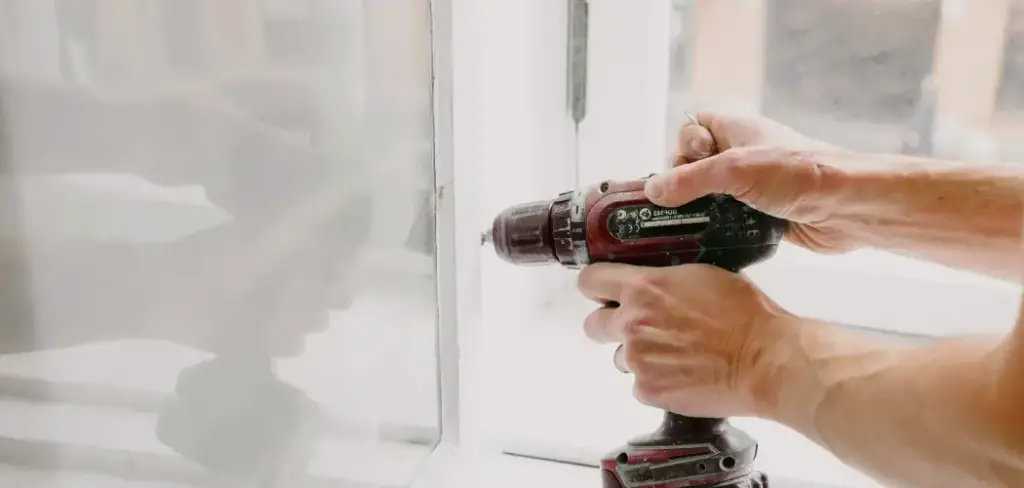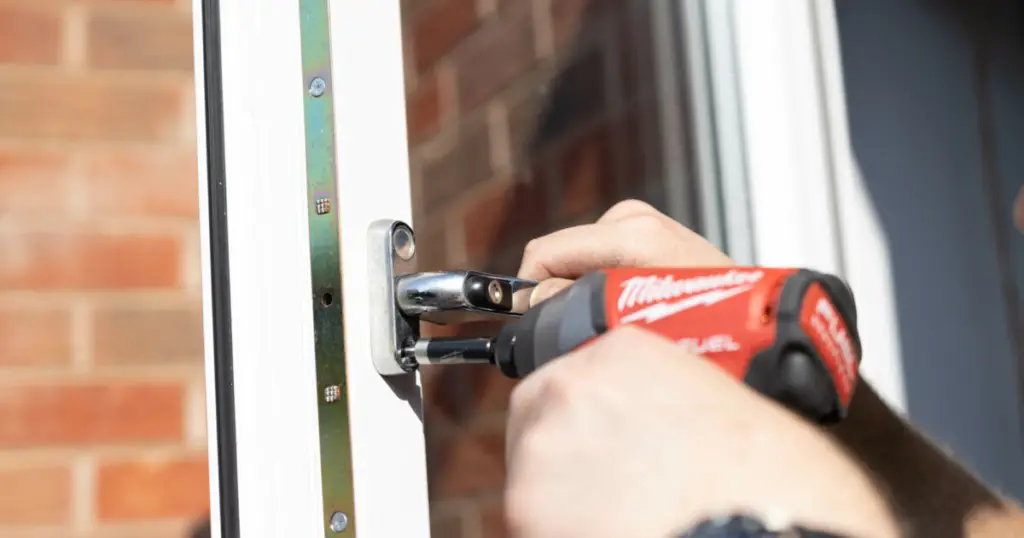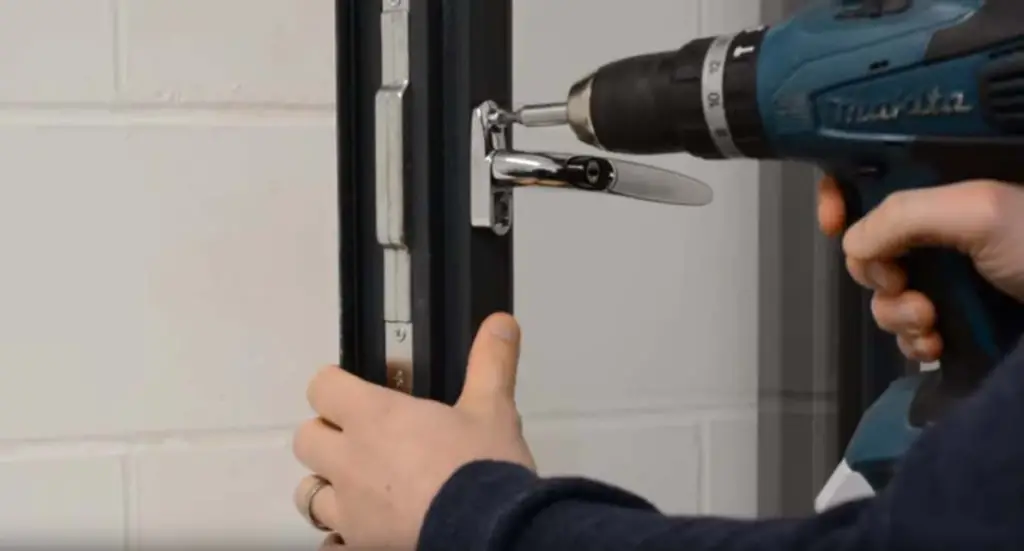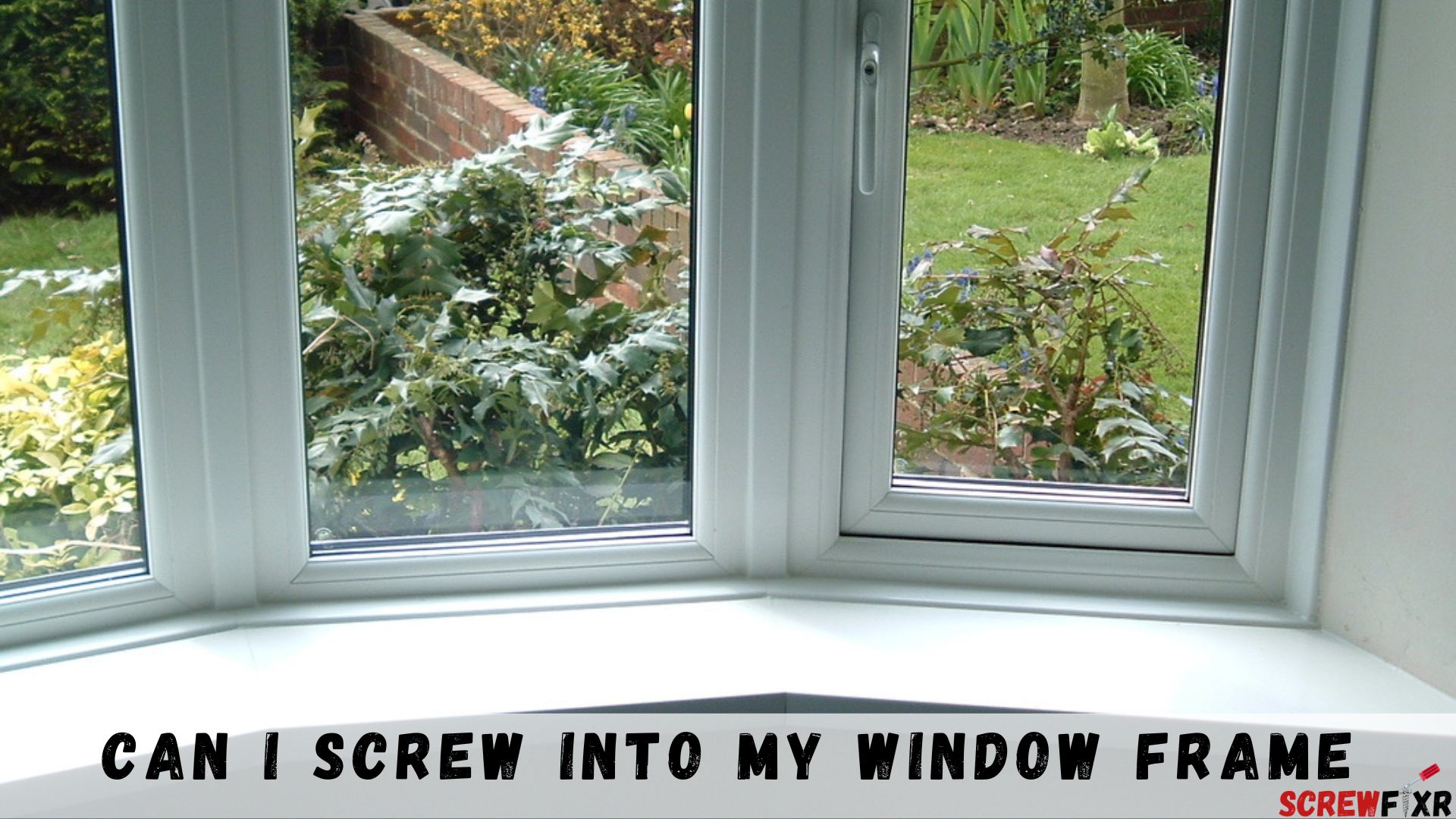Screwing into your window frame may seem like a straightforward task, but it’s essential to do it correctly to avoid any potential issues. Whether you’re looking to hang curtains, install blinds, or simply need additional support for window accessories, this guide will walk you through the process step by step. In this article, we’ll cover everything you need to know about can I screw into my window frame and how to do it properly.
Understanding Window Frames

What Are Window Frames?
Window frames are the foundational structures that surround and support the windowpane within a wall opening. They provide structural integrity to the window, hold the glass or glazing in place, and contribute to the overall aesthetics of both the interior and exterior of a building.
Different Types of Window Frames
- Wooden Window Frames
Wood has been a traditional choice for window frames due to its natural beauty and insulating properties. It provides a classic, warm appearance to homes.
- Vinyl Window Frames
Vinyl frames are known for their durability and low maintenance. They are resistant to moisture, rot, and insects, making them a popular choice for modern homes.
- Aluminum Window Frames
Aluminum frames are lightweight and strong, allowing for larger window openings and sleek, contemporary designs. They are also resistant to rust and corrosion.
- Fiberglass Window Frames
Fiberglass frames offer excellent insulation and strength. They are versatile and can mimic the appearance of wood while requiring minimal maintenance.
Tools and Materials Needed
Essential Tools
To safely and effectively screw into your window frame, you’ll need a set of essential tools, including:
- Power Drill: A reliable power drill will be your primary tool for creating holes and driving screws.
- Drill Bits: High-quality drill bits of various sizes are necessary for drilling pilot holes of the correct diameter.
- Screwdriver Bits: Ensure you have compatible screwdriver bits for the screws you plan to use.
- Measuring Tape: Accurate measurements are crucial for proper placement of screws.
- Level: A level ensures that your object will hang straight and level on the window frame.
- Safety Gear: Safety glasses and ear protection are essential, especially when working with power tools.
- Dust Mask: To protect against inhaling dust and debris while drilling.
Types of Screws Suitable for Window Frames
Selecting the right screws is vital to ensure a secure attachment without damaging the window frame. Here are some types to consider:
- Wood Screws: Ideal for wooden window frames, these screws have a coarse thread for a strong grip.
- Self-Drilling Screws: These screws have a drill-like tip and are suitable for metal or aluminum window frames, as they can pierce the material.
- Masonry Screws: If your window frame is made of concrete or brick, masonry screws with specialized anchors may be necessary.
- Plastic Anchors and Screws: For vinyl or PVC window frames, use plastic anchors and screws designed for these materials to prevent cracking or damage.
Other Required Materials
In addition to screws and tools, you’ll need:
- Anchors: Depending on the weight and material of the object you’re hanging, you may require wall anchors or window-specific anchors.
- Screw Covers: These can be decorative or functional, hiding screw heads and providing a finished look.
- Pencil: For marking drill points accurately.
- Screwdriver: Sometimes, a manual screwdriver can be handy for final adjustments.
- Painter’s Tape: To protect the window frame’s finish while working.
Ensuring you have the right tools and materials is crucial for a successful and safe attachment to your window frame.
Can I Screw Into My Window Frame?

When considering whether you can screw into your window frame, several factors come into play. Let’s explore each aspect in detail.
Window Frame Material Matters
The first thing to consider is the material of your window frame. Most window frames are made of wood, vinyl, or metal. Each material has its characteristics, and it’s crucial to choose the right screws and anchors that are compatible with the frame material.
- Wooden Window Frames: If your window frame is wooden, you’re in luck. Wooden frames are generally the easiest to work with when it comes to screwing into them. Use wood screws for the best results.
- Vinyl Window Frames: Vinyl frames are delicate and can crack easily. It’s essential to be cautious when screwing into them. Pre-drilling small holes and using specialized vinyl anchors can help you secure items to vinyl frames without causing damage.
- Metal Window Frames: Metal frames are sturdy but may require specific tools and screws designed for metal. Consult with a hardware store expert if you’re unsure about the right hardware for your metal window frame.
Finding the Right Spot
Before you start screwing into your window frame, determine the ideal location. Here’s how:
- Measure Twice: Measure the distance between the screws or brackets you intend to install. Ensure they are level and evenly spaced.
- Avoid Glass: Be careful not to drill or screw into the glass portion of your window. Drilling into glass can lead to cracks or shattered panes.
- Check for Studs: If your window frame is near a wall, use a stud finder to locate wall studs. Attaching screws to studs provides extra support and stability.
Choosing the Right Screws and Anchors
Selecting the appropriate screws and anchors is crucial for a secure installation.
- Screw Length: The length of the screw should be determined by the thickness of the material you’re attaching to the frame. Using screws that are too long can damage the frame or push against the glass.
- Anchors: Depending on the material and weight of the object you’re hanging, you may need plastic, metal, or toggle anchors. These anchors provide extra stability and prevent screws from loosening over time.
Installation Steps
Now that you’ve gathered the necessary information, let’s go through the steps to screw into your window frame safely:
- Gather Your Tools: You’ll need a power drill, appropriate screws, anchors (if necessary), a level, measuring tape, and safety goggles.
- Mark Your Spots: Use a pencil to mark the spots where you’ll be screwing into the frame. Make sure they are level and at the correct distance apart.
- Pre-Drill Holes: For a smoother installation, pre-drill small holes where you’ve marked. This will prevent the wood or frame from splitting.
- Attach Screws: Using your power drill, attach the screws securely into the pre-drilled holes. Be careful not to overtighten, as this can damage the frame.
- Hang Your Accessories: Once the screws are in place, hang your curtains, blinds, or other accessories as needed.
- Check for Stability: Give your accessories a gentle tug to ensure they are securely fastened to the window frame.
Common Mistakes to Avoid
Over-tightening Screws
One of the most common mistakes when screwing into window frames is over-tightening the screws. This can lead to various issues, including:
- Damage to Window Frame: Excessive force can cause cracks or splintering in wooden frames, or it may warp or deform other materials like vinyl or aluminum.
- Reduced Holding Capacity: Surprisingly, over-tightening can reduce the holding capacity of the screws, making the attachment less secure.
- Stripped Screws: Over-tightening can strip the threads on the screw or in the frame, making it challenging to remove or reposition the screw in the future.
Drilling at the Wrong Angle
Drilling at the wrong angle can lead to misalignment, instability, and potential damage. Some common errors include:
- Angling Away: If you drill at an angle away from the window frame, the screw won’t anchor securely, and the attached object may not hang level.
- Angling Inward: Drilling too steeply inward can result in the screw penetrating too deeply or even coming out on the other side of the frame, causing damage.
- Not Using a Level: Neglecting to use a level while drilling can lead to objects hanging crookedly, which can be both unsightly and impractical.
Ignoring Weight Restrictions
Every window frame has a weight limit it can safely support. Ignoring these weight restrictions can have serious consequences, such as:
- Structural Damage: Exceeding weight limits can damage the window frame, causing it to sag or even fail.
- Safety Hazards: Heavy objects falling due to inadequate support can pose safety risks to occupants and potentially cause injury.
- Voided Warranties: In some cases, exceeding weight limits may void the warranty on your window frame or the attached object.
To avoid these common mistakes, always follow manufacturer guidelines, use the right tools and materials, and exercise caution and precision during installation.
Frequently Asked Questions

Can I Screw Into My Window Frame Without Damaging It?
Yes, you can screw into your window frame without damaging it if you choose the right screws, anchors, and follow the proper installation steps.
What Should I Do If I Accidentally Crack the Window Pane?
If you accidentally crack the window pane, you’ll need to replace it. Contact a professional for glass replacement services.
Are There Weight Limits for Screwing into Window Frames?
Yes, there are weight limits for screwing into window frames. Check the manufacturer’s guidelines for your window frame, and never exceed the recommended weight limit.
Can I Use Wall Anchors on Vinyl Window Frames?
Yes, you can use wall anchors on vinyl window frames. However, be sure to choose anchors that are compatible with vinyl and follow the manufacturer’s recommendations.
Is It Safe to Screw into Metal Window Frames?
Screwing into metal window frames is safe as long as you use the appropriate tools and screws designed for metal.
Can I Remove Screws from Window Frames Without Damaging Them?
Yes, you can remove screws from window frames without damaging them. Use a screwdriver or power drill in reverse to unscrew them gently.
Conclusion
Screwing into your window frame can be a convenient way to hang curtains, blinds, or other accessories. By following the steps outlined in this guide and considering the material of your window frame, you can ensure a secure and damage-free installation. Remember to choose the right screws and anchors, measure carefully, and always prioritize safety. Now you can confidently answer the question, “Can I screw into my window frame?”


